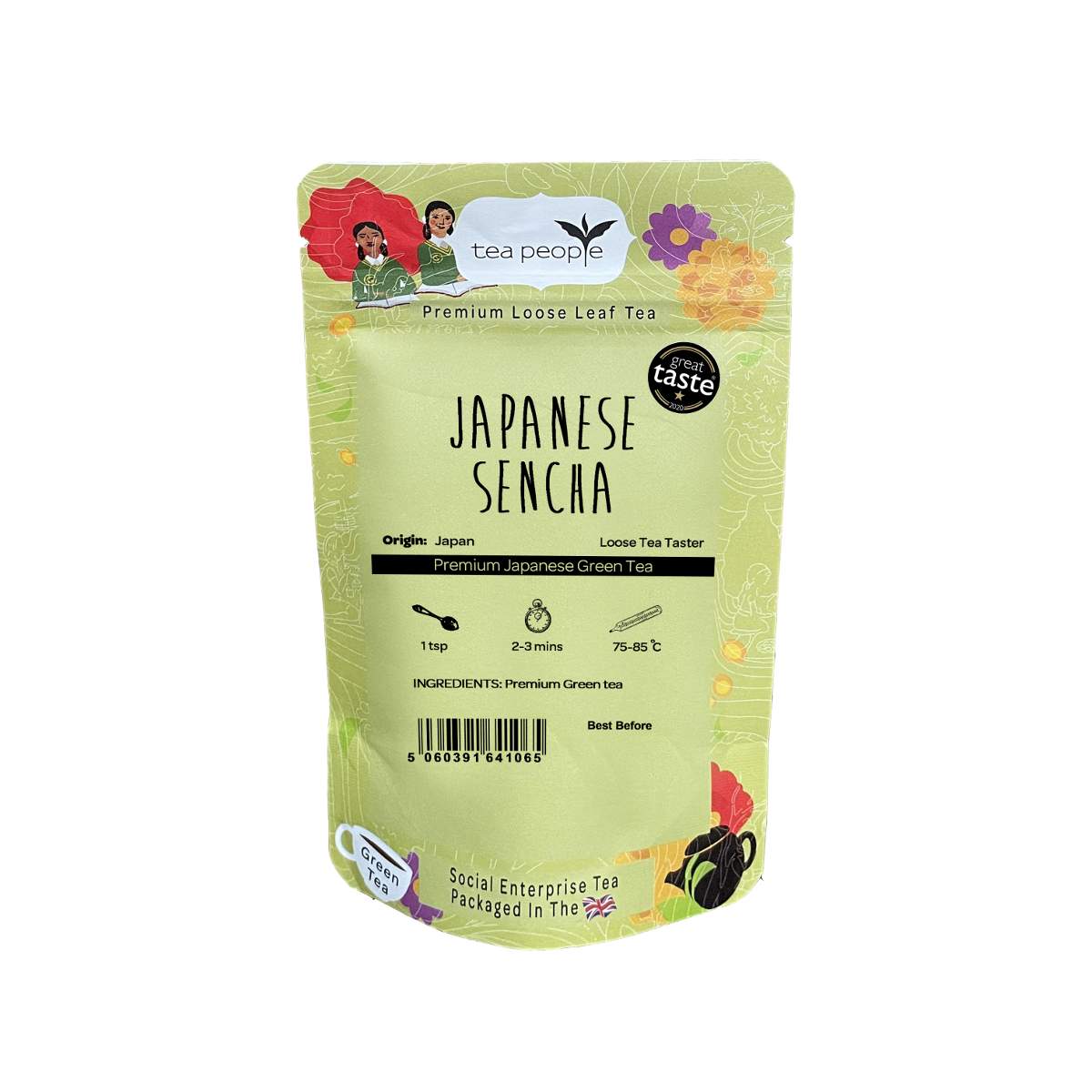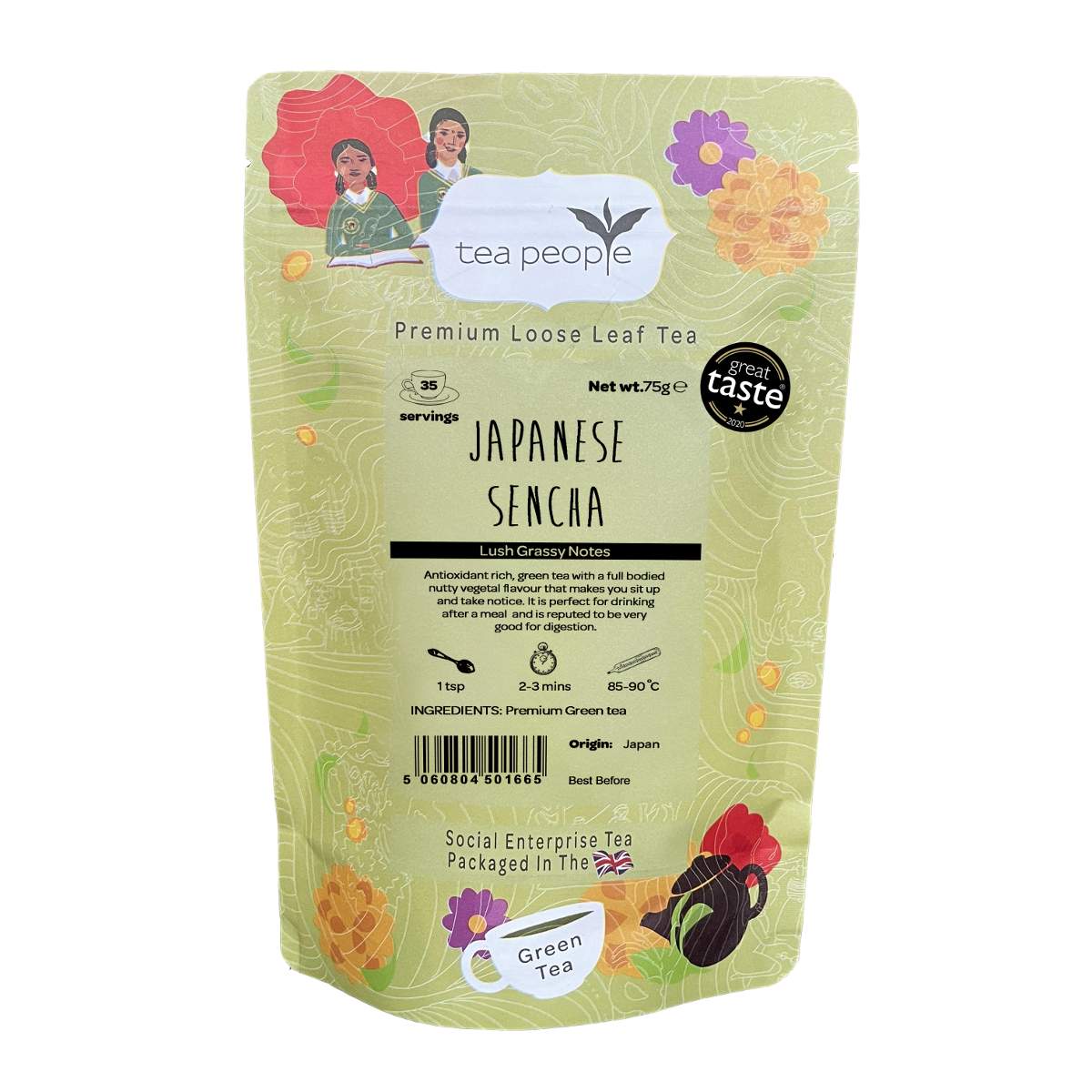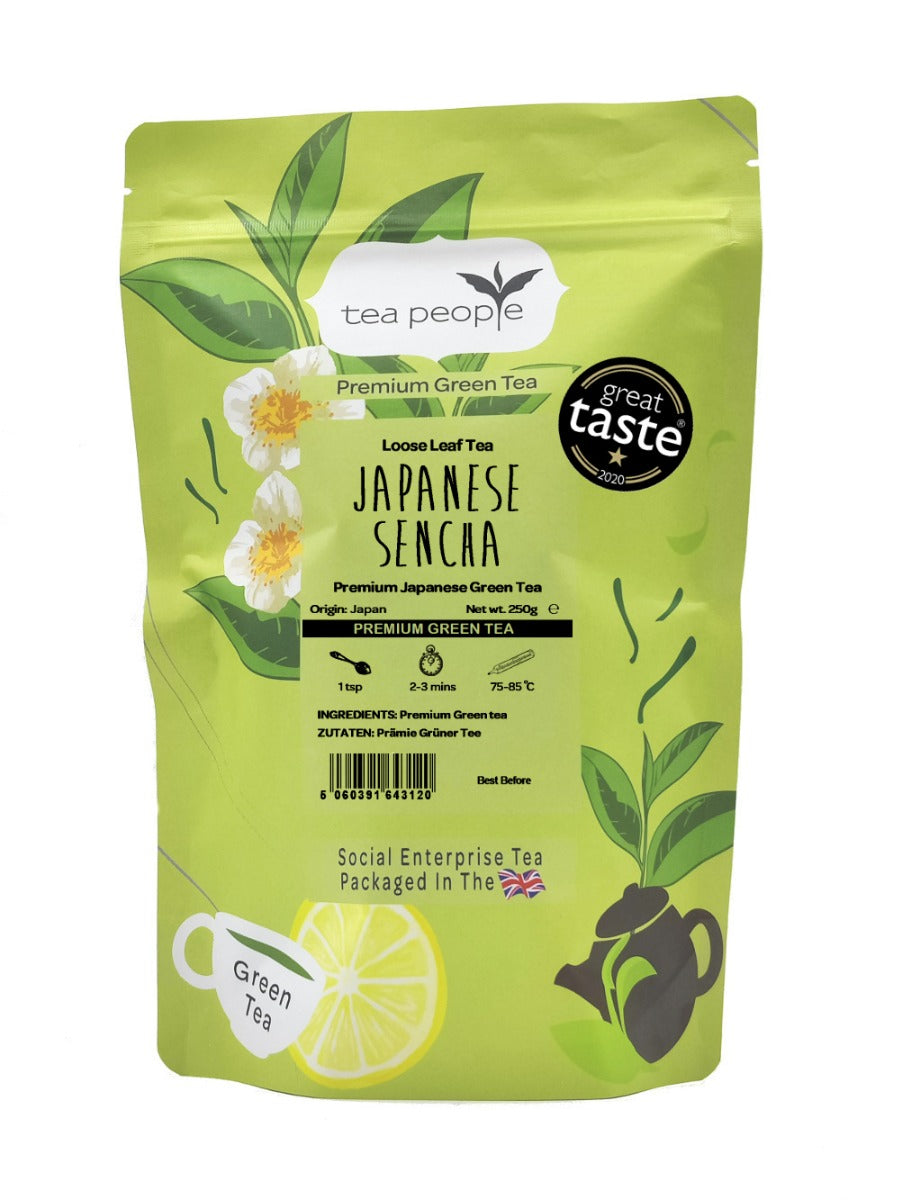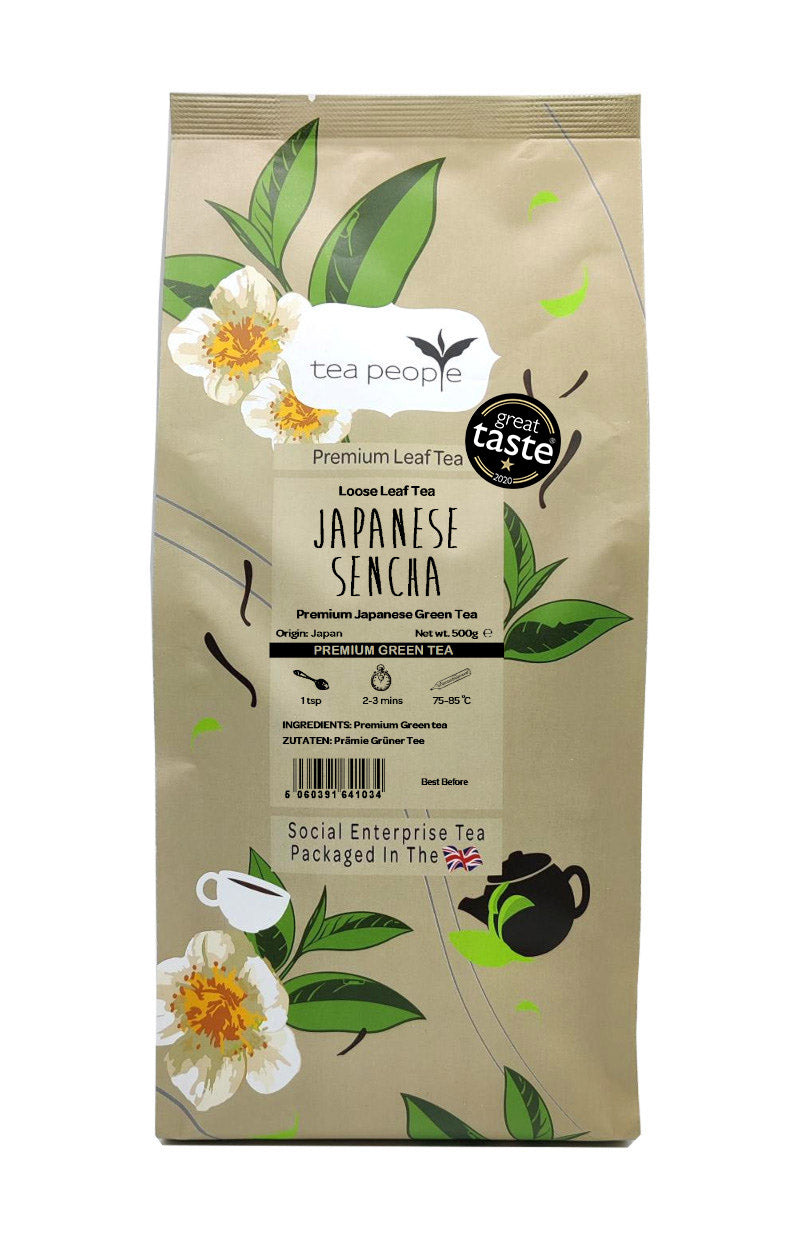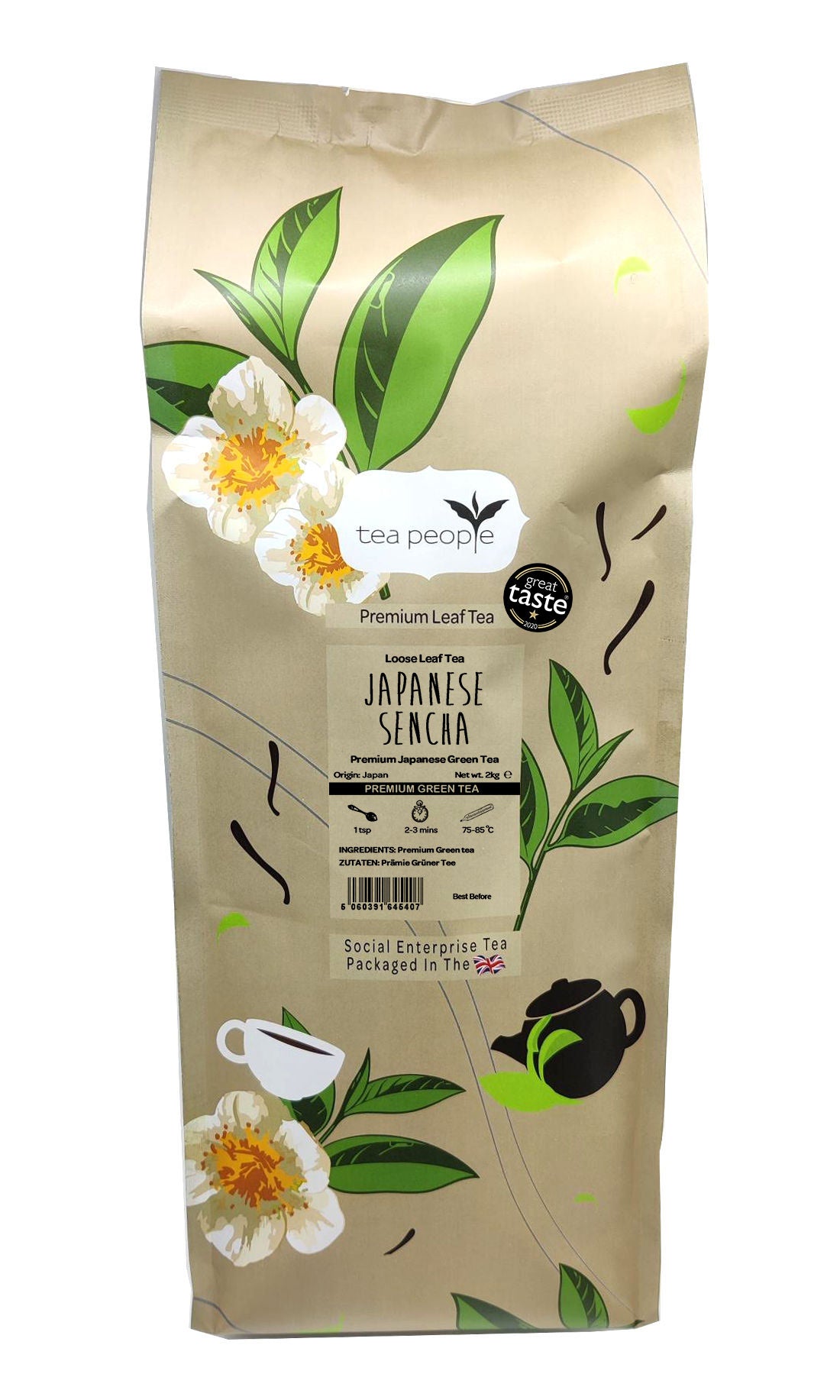Japanese Sencha - Loose Green Tea
Premium Japanese Green Tea
Sencha is the quintessential Japanese green tea. It is made from leaves that are exposed to direct sunlight for their entire life cycle. This tea is from the Uji prefecture of Japan.
Japanese teas are processed in a very different way compared to other teas in that Japanese tea leaves are steamed for 15-20 seconds to prevent oxidation of the leaves after being harvested. Then, the leaves are rolled, shaped, and dried. This step creates the customary thin cylindrical shape of the tea. Finally, the leaves are sorted and divided into differing quality groups.
This unique technique used to produce these teas, result in a rich vegetal flavor and aroma reminding of dark greens and seaweed with moderate bitterness and a slight nutty quality.
As is customary with most Japanese teas, this Sencha exhibits mixed grading, consisting of both small and larger leaf particles. This gives the Sencha a fuller body than many other green teas.
The liquor is a greenish golden colour,smooth, moderately dense and leaves a delicious deep aftertaste.
Sencha tea is perfect for drinking after a meal and is reputed to be very good for digestion.
Ingredients
Premium Japanese Sencha Green tea
Origin
Uji region, Japan
How to enjoy this tea
Steep a tsp per cup for 2-3 mins in 85-90 deg; C water. Best had without milk.
Caffeine content
Approx 20mg per cup
Tea People are passionate about all things tea and create Great Taste Award-winning brews. From the finest premium single estate tea, to unique blends and herbal infusions, the teas are available in loose leaf form as well as plastic-free biodegradable pyramid tea bags.
Tea People believe that 'tea is what you make it'. Tea can be different things to different people and with a little effort, creativity and innovation, it can even become a powerful medium for social change.
Half of the brand's net profits go towards supporting educational infrastructure and improving the lives of underprivileged communities in and around the tea growing regions.



